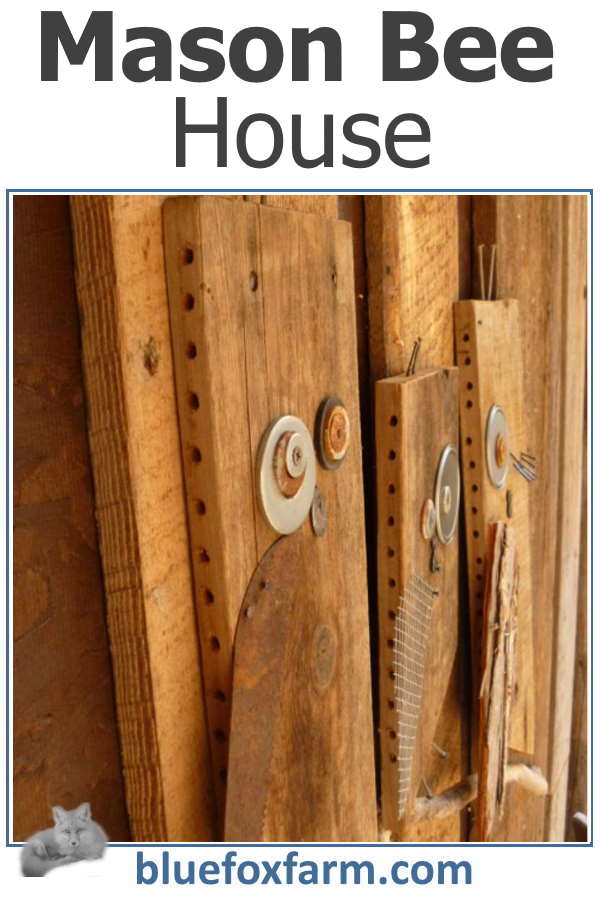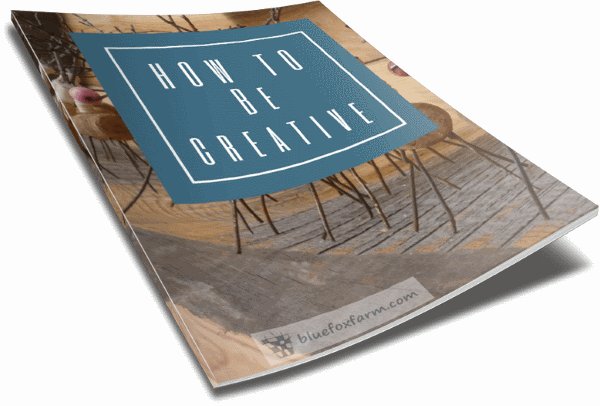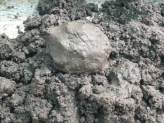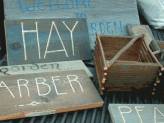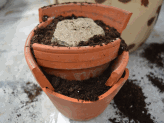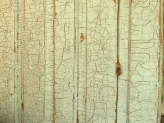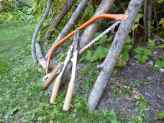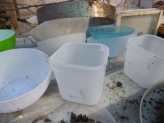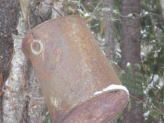Mason Bee House
An Easy and Fun Garden Craft
Mason bees are some of the busiest little pollinators in your garden; as solitary bees, they don't live in a hive like many other types of bee.
They require a small cavity which they fill with mud, lay an egg on the carcase of a prey insect, and seal it up for the larvae to hatch in peace.
Mason Bee Houses can be simple or more difficult; the bees don't care which.
The important features of a good bee house are; dry and out of the rain; out of reach of predators; within easy access to some mud.
That's it.
They really are not fussy.
The benefits of having lots of mason bees and the other little solitary bees is that they can pollinate many more plants than whole hives of honey bees.
Some of them do sting, but mostly they stay away from people; their goal is just to pollinate flowers, which they do incidentally while foraging for pollen and nectar.
In Japan and other places where the honey bee is pretty much extinct, the use of Mason Bees is the only option, other than hiring field workers to pollinate the fruit trees by hand, with a paintbrush. Who on earth would do this for a living?
Get inspired to make some bee condos; honestly, they're easy to make, and the bees will be visiting soon, so make them welcome to your garden.
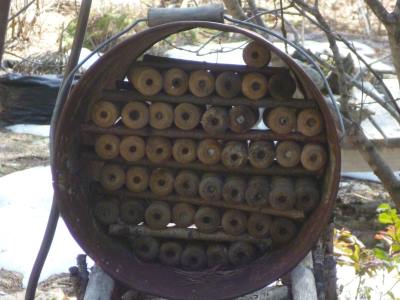 Decorative spools or spindles, lined up in an old bucket - now that's salvage, made into something useful!
Decorative spools or spindles, lined up in an old bucket - now that's salvage, made into something useful!In a hilarious turn of events, the squirrels thought the spools were some kind of food source, and took them all to hide. I might come across them stuffed under a log sometime.
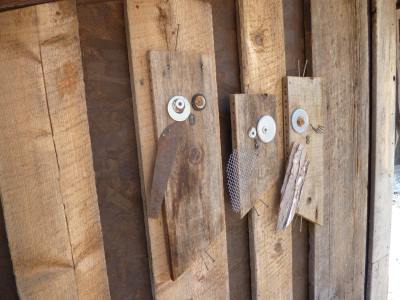 Scraps of lumber, accented with bits of wire, scrounged odd bits from the junk drawer, made into these adorable owls for a garden focal point with a benefit - a bee condo
Scraps of lumber, accented with bits of wire, scrounged odd bits from the junk drawer, made into these adorable owls for a garden focal point with a benefit - a bee condoHere's where it comes in handy to be a hoarder; if you have a place to keep all kinds of rusty bits of metal, washers, hooks and broken jig saw blades, this is the project for you.
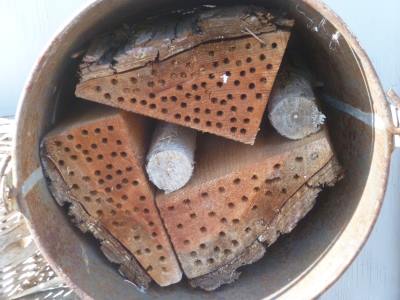 Cedar pieces from the local sawmill, with many holes drilled three inches deep
Cedar pieces from the local sawmill, with many holes drilled three inches deepThe beauty of making some of these garden crafts is that they can be as detailed or as simple as you want to make them.
In most cases, you won't need much in the way of tools (like the spool or spindle design), in others, they're a great way to use stuff that you have put away in a drawer waiting for that perfect use.
Washers, bolts, tin lids, nails and many other found or salvaged items can be used to make the owls. A couple of pieces of firewood or trees cut on your property can become an interestingly patterned design.
Have fun, and make the bees feel right at home.
Update; I made these owls in April 2013 - it's taken a little over a year, but I'm happy to say that some of the cells in the side (holes drilled into the wood) are now occupied.
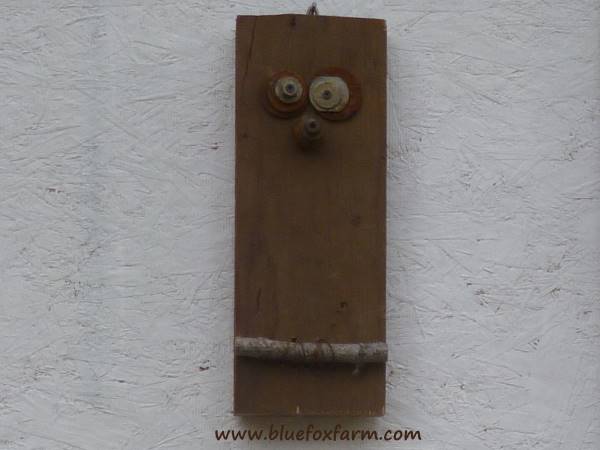
I was inspired to make more, so now I have several in various places around my garden - I usually try to put them where they'll be protected from the rain, like this one hung on the side of 'Bliss', a storage shed on skids.
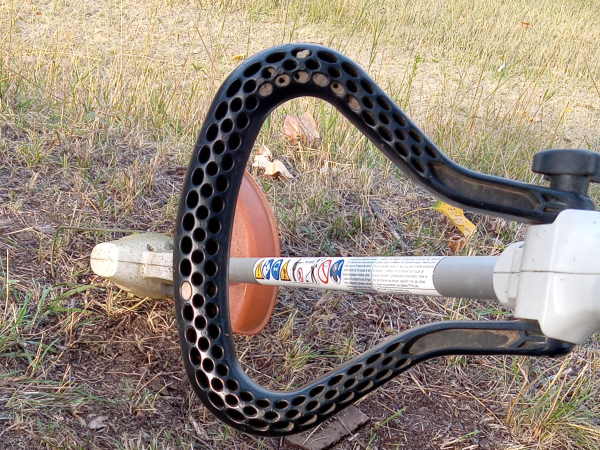 Mason bees nesting in the weed whacker handle
Mason bees nesting in the weed whacker handleWood is not the only thing attractive to mason bees - the only criteria is a hole of the right size, like these in the handle of the weed whacker.
Learn what it takes to be creative - we all have the gene but how do we develop it? Get the free guide!
Fill in the form below for your copy;
(Don't be disappointed - use an email address that will accept the free download - some .aol email addresses won't.
If you don't see your download within a few minutes, try again with another email address - sorry for the bother.)
